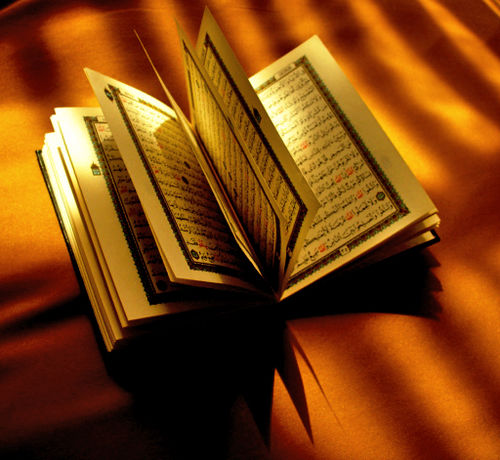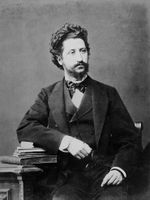Category:Early Islamic Studies--1850s
|
|
Early Islamic Studies : 2020s -- 2010s -- 2000s --1990s -- 1980s -- 1970s -- 1960s -- 1950s -- 1940s -- 1930s -- 1920s -- 1910s -- 1900s -- 1850s -- 1800s -- 1700s -- 1600s -- 1500s -- 1450s -- Home Timeline : 2020s -- 2010s -- 2000s -- 1990s -- 1980s -- 1970s -- 1960s -- 1950s -- 1940s -- 1930s -- 1920s -- 1910s -- 1900s -- 1850s -- 1800s -- 1700s -- 1600s -- 1500s -- 1450s -- Medieval -- Home
|
History of research (1850s -- Notes
In 1860 Theodor Nöldeke published another relevant historical-critical introduction to the Quranic textus receptus. The historical understanding of Muhammed progressed thanks to the studies of Aloys Sprenger between 1861 and 1865, William Muir between 1858 and 1861, and again Nöldeke in 1863. Hartwig Hirschfeld (1878, 1886), William Muir (1878), and Charles Cutler Torrey (1892) are other authors who significantly contributed to the development of Early Islamic Studies in the second half of the 19th century. But modern scholarship on Islam's origins is indebted in particular to the groundbreaking works of Ignaz Goldziher (1850-1921), whose Muhammedanische Studien, published in 2 vols. between 1889 and 1890, represented a first, successful and in many ways still valid attempt to thoroughly examine the making and early development of Islamic identity, and its literature, against their complex historical and religious setting.
Pages in category "Early Islamic Studies--1850s"
The following 27 pages are in this category, out of 27 total.
1
- Aloys Sprenger (1813–1893), scholar
- Mohammed, the Arabian Prophet (1850 Miles), play
- (+) The Life of Mahomet (1858-61 Muir), book
- Geschichte des Qorans (The History of the Qur'an / 1860 Nöldeke), book
- The Koran: Translated from the Arabic, the Suras Arranged in Chronological Order; with Notes and Index (1861 Rodwell), book
- Das Leben und die Lehre des Mohammad (The Life and Teachings of Muhammad / 1861-1865 Sprenger), book
- Das Leben Muhammeds (The Life of Muhammad / 1863 Nöldeke), book
- Коран (The Qur'an / 1871 Boguslawski), ms.
- A Critical Examination of the Life and Teachings of Mohammed (1873 Ali), book
- Korânen ifrån arabiskan öfversatt (The Qur'an Translated from the Arabic / 1874 Tornberg), book
- Jüdische Elemente im Korân (Jewish Elements in the Qur'an / 1878 Hirschfeld), book
- The Corân: Its Composition and Teaching (1878 Muir), book
- The Life of Mahomet, 2nd ed. (1878 Muir), book
- Коран (The Qur'an / 1878 Sablukov), book
- Historisch-kritische Einleitung in den Koran, 2nd ed. (Historical-Critical Introduction to the Qur'an / 1878 Weil), book
- De vocabulis in antiquis Arabum carminibus et in Corano peregrinis (1880 Fraenkel), book
- The Qurân (1880 Palmer), book
- Beiträge zur Erklärung des Korân (A Contribution to the Study of the Qur'an / 1886 Hirschfeld), book
- Muhammedanische Studien (Muslim Studies / 1889-1890 Goldziher), book
- Mohammed (Muhammad / 1892-1895 Grimme), book
- The Commercial-Theological Terms in the Koran (1892 Torrey), book
- The Life of Mahomet, 3rd ed. (1894 Muir), book
- The Corân: Its Composition and Teaching, 2nd ed. (1896 Muir), book
- The Bible and Islam; or, The Influence of the Old and New Testaments on the Religion of Mohammed (1897 Smith), book
- The Days of Mohammed (1897 Wilson), novel




